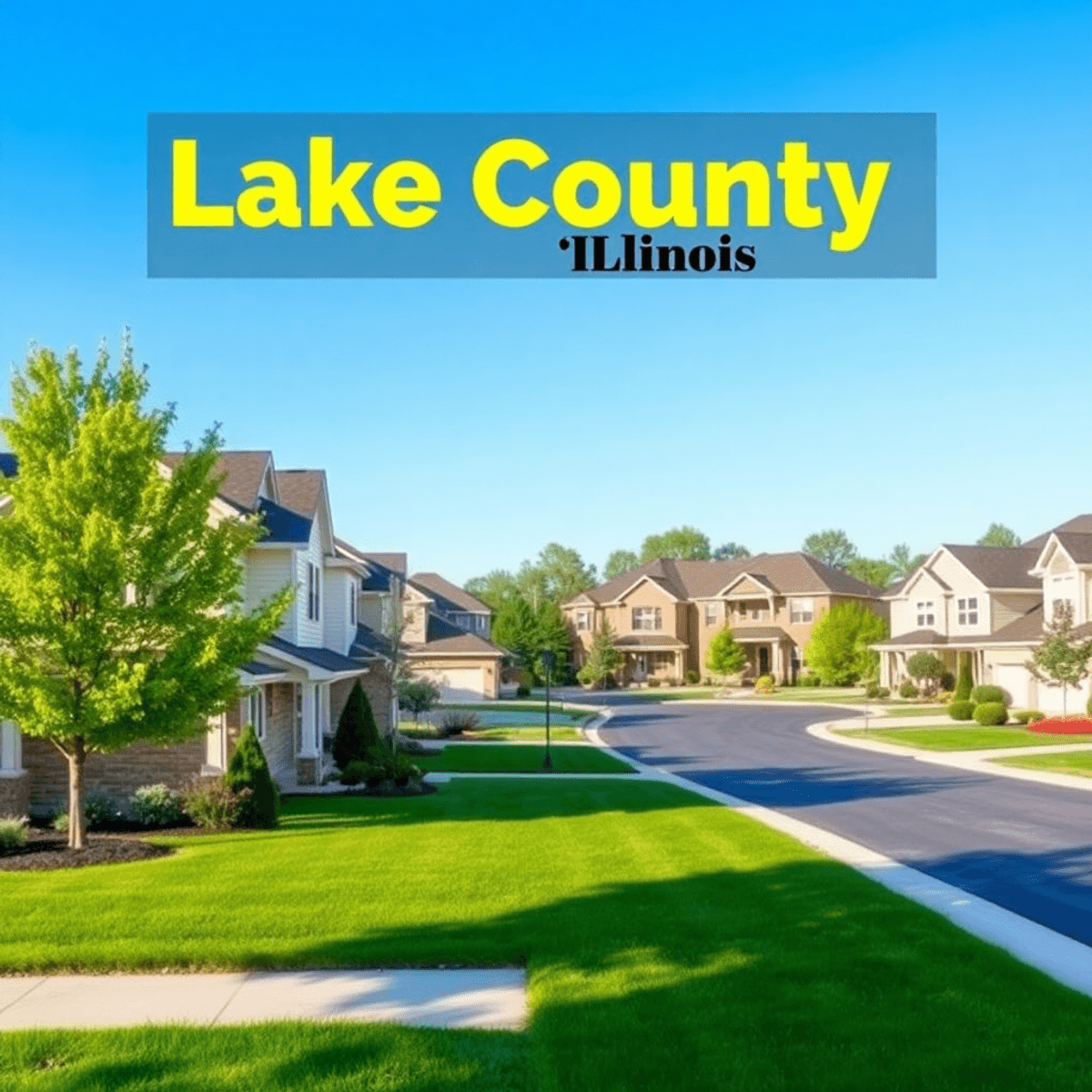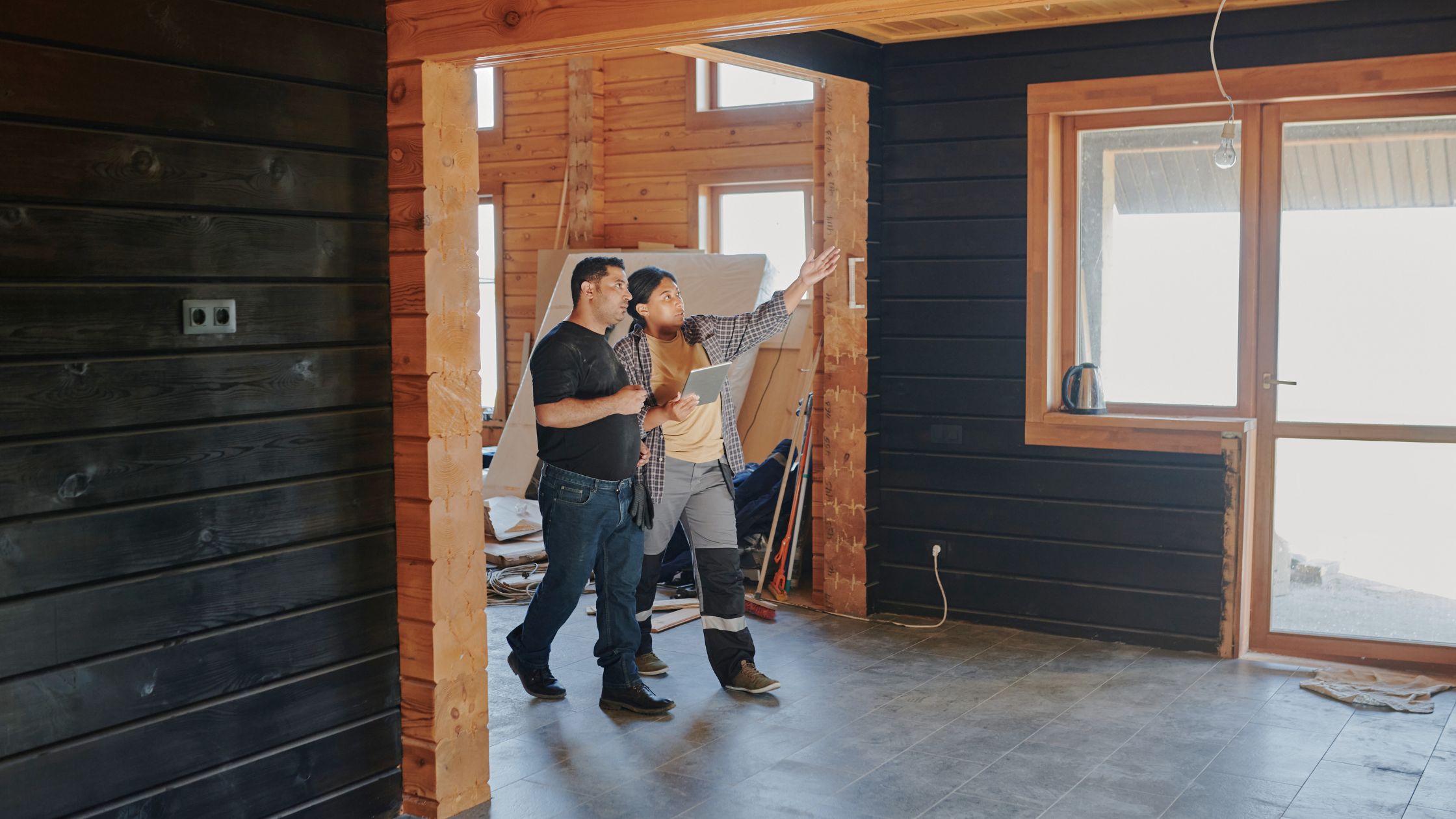Lake County vs Illinois Housing Market: A Comparative Analysis
Understanding how regional housing markets compare is essential for anyone considering a move, investment, or sale in Illinois. The Lake County housing market stands out as one of the most dynamic suburban areas, while the broader Illinois housing market presents a mix of urban, suburban, and rural trends that shape real estate decisions in 2025.
This article delivers a comprehensive comparative analysis: Lake County vs Illinois Housing Market, examining key metrics like median prices, inventory levels, buyer behavior, and the economic forces at play. By highlighting both the distinct features of Lake County and statewide patterns, you gain clarity on:
- Price differences and sales activity
- Housing stock composition
- Economic and demographic influences
- Market outlooks for buyers, sellers, and investors
Whether you’re tracking local trends or making strategic real estate moves in 2025, this analysis provides actionable insights into how Lake County stacks up against Illinois as a whole.
In the midst of these real estate considerations, it’s also important to remember that a house is more than just a structure; it’s a home. And whether you’re looking for a cozy sofa or a spacious couch to make your new house feel more like home, understanding the difference between the two can be quite helpful. For an in-depth look into this topic, you might find our article on Sofa vs. Couch: What’s the Difference? interesting.
Moreover, if you’re planning on hosting gatherings in your new home and need some quick dessert ideas to impress your guests, consider trying out some dump cake recipes. They’re incredibly easy to make and delicious!
And let’s not forget about the importance of ambiance in a home. A well-chosen ceiling fan can significantly enhance comfort levels. If you’re interested in finding out more about this aspect of home improvement, check out our guide on the best ceiling fans.
Lastly, if you have a sweet tooth and love pumpkin pie during fall season or any time of the year really, I recommend trying out Sara’s silky pumpkin pie recipe. It’s sure to be a hit!
Understanding Lake County’s Housing Market
Current Home Prices and Appreciation Rates
Lake County home prices have consistently outpaced statewide averages, settling between $400,000 and $435,000 in mid-2025. Year-over-year appreciation has ranged from 1.2% to 4.8%, reflecting moderate but steady growth.
Dominance of Single-Family Detached Homes
The housing stock in Lake County is defined by its clear preference for single-family detached homes. About three-quarters of all new permits are issued for this type of property, making single-family homes a dominant feature of the local landscape. Between 2000 and 2020, the area added approximately 43,459 housing units, highlighting two decades of sustained housing growth.
Strong Demand and Quick Sales
Demand remains strong as evidenced by the short average listing period—homes typically spend just around 27 days on market. This rapid turnover signals a competitive environment for buyers and underlines the region’s appeal.
Economic Factors Influencing Demand
Local economic prosperity continues to shape demand trends. Strong employment opportunities and higher median household incomes support elevated price points and stimulate ongoing interest in the market. Recognizing varied needs across income levels and life stages, county officials have begun prioritizing efforts to diversify available housing types beyond traditional single-family homes, with a gradual increase in multifamily developments noted in recent years.
Lake County’s blend of robust pricing, swift sales cycles, and evolving housing options positions it as an attractive destination for buyers seeking suburban living with diverse opportunities.
Strategies for Homeowners in a Competitive Market
In such a competitive market, homeowners often seek ways to enhance their property’s appeal. This could involve simple home improvements or even considering the landscaping around their homes. For instance, if you’re contemplating adding unique plants to your garden, you might find that learning how to grow an African milk tree could be beneficial.
On the other hand, if you’re moving into a new home in Lake County and are in need of kitchen essentials like dishwasher pods, it’s crucial to understand their potential impact on your plumbing system before making a purchase.
Moreover, when it comes to shopping for groceries or home essentials in Lake County, local stores like Aldi offer a variety of products that can ease your transition into your new home. From basic pantry staples to seasonal items like Halloween pillows, Aldi has become a go-to spot for many residents.
Lastly, moving into a new home can sometimes lead to unexpected situations such as lipstick stains on clothes during unpacking or decorating. Knowing how to tackle these minor issues can make the moving process smoother.
Examining the Statewide Housing Market in Illinois
Illinois home values in 2025 continue to reflect steady, moderate growth. The average statewide home value stands at approximately $285,813, marking a 3.5% increase from the previous year. For buyers and sellers tracking recent transactions, the statewide median sales price reached about $315,000 as of May 2025.
Closed home sales in Illinois have edged downward by roughly 4.7% to 6.5% compared to last year. At the same time, inventory levels have grown by about 6%, introducing more options for buyers but signaling a shift toward a less frenzied market environment.
Mortgage rates remain a critical factor. The average 30-year fixed mortgage rate hovers near 6.75%, shaping affordability and buyer sentiment across the state. Analysts expect gradual moderation in rates later in 2025.
Regional disparities define the Illinois housing landscape:
- Chicago metro areas face persistent inventory shortages, making competition fierce and driving up prices in select neighborhoods.
- Suburban counties retain a strong preference for single-family homes, while urban centers are witnessing a notable uptick in multifamily construction.
- Cities like Rockford see price appreciation, yet others—such as Mount Vernon—grapple with softer demand and modest declines.
The interplay between inventory challenges and evolving housing preferences continues to shape closed home sales and market stability across Illinois.
As potential buyers navigate this complex market, they may want to explore various aesthetic trends that could influence their home purchase decisions or renovations:
- The Vampire Aesthetic: This trend is gaining popularity and is characterized by moody designs that resonate with modern sensibilities.
- The Strega Nona Aesthetic: Those seeking a cozier vibe might consider adopting this aesthetic, which embodies a nostalgic and simple lifestyle reminiscent of the beloved children’s book character.
- The Cinnamon Girl Aesthetic: As winter approaches, this aesthetic could be the perfect way to upgrade your home for the holiday season, adding warmth and charm to any space.
When purchasing a new home, it’s also essential to consider functional aspects such as garage door openers. Our guide on the best garage door openers can provide valuable insights into choosing the right one for your new abode.
Lastly, if you’re planning to celebrate housewarming or other special occasions after moving into your new home, you might find our delightful Balloon Cake Recipe useful for baking an adorable cake that shows your loved ones how much you care.
Comparative Analysis: Price Trends and Market Activity Between Lake County and Illinois
Home Price Comparison
The home price comparison between Lake County and Illinois reveals a prominent suburban premium. Lake County’s median home prices, consistently ranging from $400,000 to $435,000, stand out against the statewide median sales price of approximately $315,000 and an average value near $285,813. This price gap reflects higher income levels, desirability of suburban living, and stronger local economic factors in Lake County.
Sales Activity Trends
Sales activity trends present another point of contrast. While Illinois as a whole faces a modest decline in closed sales—down roughly 4.7% to 6.5% year-over-year—Lake County maintains stability. The volume of transactions in Lake County signals persistent demand despite broader statewide slowdowns.
Inventory Levels and Market Velocity
Inventory levels and market velocity shape buyer behavior in both markets:
- Lake County: Average days on market sit at just 27 days. Homes are moving quickly, often prompting buyers to act decisively or risk missing opportunities.
- Statewide: Inventory has increased by 6%, yet low supply remains a challenge, particularly in major metros. Longer days on market outside high-demand zones give buyers slightly more negotiation leverage.
Buyers targeting Lake County encounter stiffer competition and need to be prepared for swift decision-making compared to those searching elsewhere in Illinois. The difference in inventory dynamics between regions underscores the importance of local context when evaluating the Lake County vs Illinois Housing Market: A Comparative Analysis.
In addition to these insights into the housing market, understanding home improvement aspects such as sanded vs unsanded grout can be beneficial for new homeowners looking to renovate. Moreover, if you’re considering personalizing your new home with seasonal decor or colors, these Halloween paint color ideas could provide some inspiration.
On a lighter note, after a long day of house hunting or renovation work, you might want to indulge in some comfort food like a caramel apple cheesecake, or unwind with a couple of spooky cocktails during Halloween gatherings. And remember that maintaining a garden can also add value to your property; perhaps you could take a leaf out of Katie Couric’s book who enjoys using fresh produce from her own garden in her salads!
The Influence of Economic and Demographic Factors on Housing Markets in Lake County and Illinois
Local Prosperity and Housing Demand in Lake County
Lake County’s housing market is closely tied to its strong economic base. Higher average household incomes, a robust professional workforce, and a concentration of corporate employers contribute directly to increased buyer power. This prosperity supports higher home values and sustains demand for single-family properties, especially in communities prized for quality schools and amenities.
A prosperous local economy does more than just boost home prices—it shapes long-term demand patterns by attracting new residents seeking stability and opportunity.
Interestingly, this demand has also led to an increase in interest towards alternative housing options such as tiny houses. These compact homes, often found on platforms like Amazon, provide an affordable yet stylish living solution that appeals to many buyers.
Employment Trends Across Illinois
Statewide, employment trends in Illinois remain a critical variable. Areas with steady job growth—such as suburban tech corridors or healthcare hubs—see stronger housing demand and price resilience. Conversely, regions facing employment stagnation or population decline experience softer markets, slower sales cycles, and downward pressure on prices.
Urban centers like Chicago feel the effects of shifting job sectors and remote work trends
Downstate cities display mixed performance tied to local industrial shifts or government employment fluctuations
Mortgage Rates and Market Stabilization
The mortgage impact on housing markets is significant across Illinois. With 30-year fixed rates hovering near 6.75%, affordability challenges have tempered buyer enthusiasm in both urban and suburban regions. Many buyers have paused their searches or adjusted budget expectations, waiting for anticipated rate moderation by late 2025.
High rates disproportionately affect first-time buyers and those with limited savings
Sellers may postpone listings, further constraining inventory until borrowing costs ease
Demographic shifts housing demand as younger buyers enter the market while older homeowners delay downsizing, adding complexity to both supply and pricing dynamics. The interplay between economics and demographics continues to shape unique outcomes in Lake County versus the broader state landscape.
For instance, the rising trend of families looking for kid- and pet-friendly homes has influenced the type of properties that are in demand. Buyers are now considering factors such as durability and style when selecting homes.
Moreover, seasonal changes also play a role in the housing market. For example, many homeowners start decorating for Halloween around this time of the year, which can influence curb appeal and subsequently affect property value.
Lastly, architectural preferences are also evolving with time. There is a growing interest in certain styles like the French Country style, known for its European elegance.
In addition to these factors, it’s important to consider the broader context of [housing market trends](https://www.huduser.gov/periodicals/ush
Future Outlook for Both Housing Markets: A Glimpse into What Lies Ahead
Illinois housing market forecast 2025+
The Illinois housing market is expected to undergo changes due to interest rate trends and evolving buyer preferences. Here’s what we can anticipate:
- Potential decrease in mortgage rates: The outlook for mortgage rates suggests a possible decline from current highs, with expectations that the average 30-year fixed rate could fall below 6.5% by late 2025.
- Impact on affordability: Lower borrowing costs would directly affect affordability, making it easier for first-time buyers to enter the market and increasing overall transaction volume.
- Shift towards single-family homes: In Lake County, the preference for single-family homes continues to dominate. Buyers are drawn to detached properties for their spaciousness and privacy, especially with the ongoing flexibility of remote work.
- Interest in tiny homes: This trend may also result in a growing interest in tiny homes, which offer affordable and efficient living solutions.
- Modest growth in multifamily construction: Regional planning efforts, driven by the increasing demand for diverse housing options, are leading to gradual growth in multifamily construction projects.
Inventory constraints and sales activity
Inventory constraints remain a significant challenge in both Lake County and across Illinois. Here’s what industry experts are predicting:
- Multiple-offer situations: Real estate agents are reporting instances where multiple buyers are competing for the same property, resulting in bidding wars.
- Fast-moving listings: Properties in desirable suburban areas are being sold quickly, often within days of being listed.
- Stabilization of sales activity: Unlike previous years when sales surged due to low inventory and high demand, experts expect sales activity to stabilize instead of experiencing dramatic increases.
- Moderate price appreciation: High-demand communities may see moderate price appreciation as a result of stable demand and limited supply.
“Stable demand, persistent low inventory, and an improving mortgage rate environment set the tone for cautious optimism,” notes one local brokerage owner.
Expectations for buyers, sellers, and investors
Buyers, sellers, and investors should prepare for specific conditions in the housing market:
- Suburban markets like Lake County are likely to show resilience despite challenges faced by urban areas.
- Urban regions will need to adapt to broader changes in housing development patterns as they strive to attract residents back into city living spaces.
Conclusion
Lake County stands out as a higher-value, suburban market distinguished by stable demand and consistent property values. The county’s persistent preference for single-family homes and short average days on market reflect a unique combination of economic prosperity and lifestyle appeal. In contrast, the Illinois housing market presents mixed regional trends, notable disparities between urban and suburban areas, and a growing emphasis on multifamily development.
Key implications from this comparative real estate summary:
- Buyers face steeper price points in Lake County but benefit from a resilient market and quality inventory; statewide, options are broader but conditions vary sharply by region.
- Sellers in Lake County enjoy strong demand and quicker sales cycles; those elsewhere in Illinois may encounter more variable outcomes tied to local supply and pricing trends.
- Investors should weigh Lake County’s stability against the broader opportunities—and risks—offered by Illinois’ diverse markets.
Lake County vs Illinois Housing Market: A Comparative Analysis signals clear distinctions that matter for every participant in the real estate process.
Just like how peonies thrive under specific conditions, understanding these market dynamics can help buyers, sellers, and investors make informed decisions. Furthermore, just as one might draw inspiration from horror films for Halloween decor, exploring different facets of the real estate market can uncover unique opportunities.
FAQs (Frequently Asked Questions)
What are the current median home prices in Lake County compared to the Illinois statewide average?
As of 2025, Lake County’s median home prices range between $400,000 and $435,000, reflecting a suburban premium. In contrast, the statewide median sales price in Illinois is approximately $315,000, with an average home value around $285,813.
How does housing demand and market activity in Lake County compare to the overall Illinois housing market?
Lake County exhibits stable sales activity with average days on market around 27 days, indicating strong demand influenced by local economic prosperity. Conversely, Illinois statewide shows a slight decline in closed home sales (4.7% – 6.5%) alongside rising inventory levels, reflecting more heterogeneous market conditions.
What is the composition of housing stock in Lake County versus statewide trends in Illinois?
Lake County’s housing stock predominantly consists of single-family detached homes, with significant growth adding 43,459 units between 2000-2020. Statewide Illinois sees growing multifamily construction particularly in urban areas like Chicago metro but single-family homes still dominate suburban markets.
How do economic and demographic factors influence the housing markets in Lake County and Illinois?
Local economic prosperity in Lake County drives higher housing demand and pricing stability. Statewide, employment trends create mixed regional performance with affordability impacted by relatively high mortgage rates (~6.75% for 30-year fixed). Demographic shifts contribute to diverse housing needs across Illinois.
What is the outlook for mortgage rates and their impact on the housing markets in Lake County and Illinois?
Mortgage rates currently hover around 6.75% for a 30-year fixed loan but are expected to moderate by the end of 2025. This moderation could enhance buyer affordability and support market stabilization both in Lake County and across Illinois.
What future trends are anticipated for the Lake County and Illinois housing markets?
The future outlook anticipates continued preference for single-family homes in Lake County balanced against increasing multifamily development statewide. Both markets expect stabilization with cautious optimism amid inventory constraints and evolving economic conditions through 2025 and beyond.
news via inbox
Nulla turp dis cursus. Integer liberos euismod pretium faucibua








